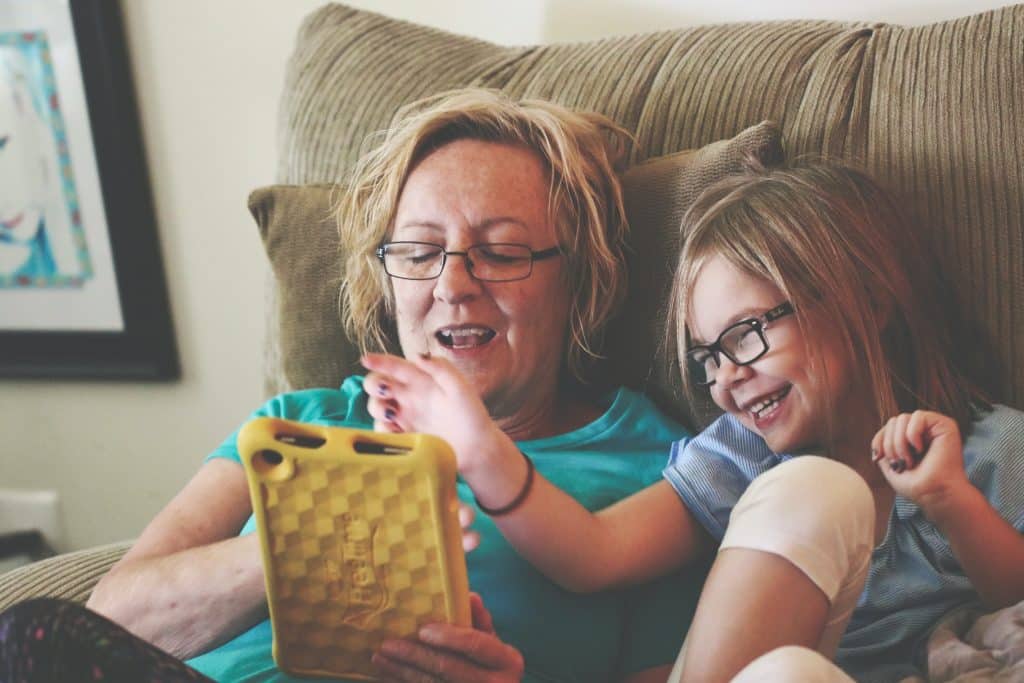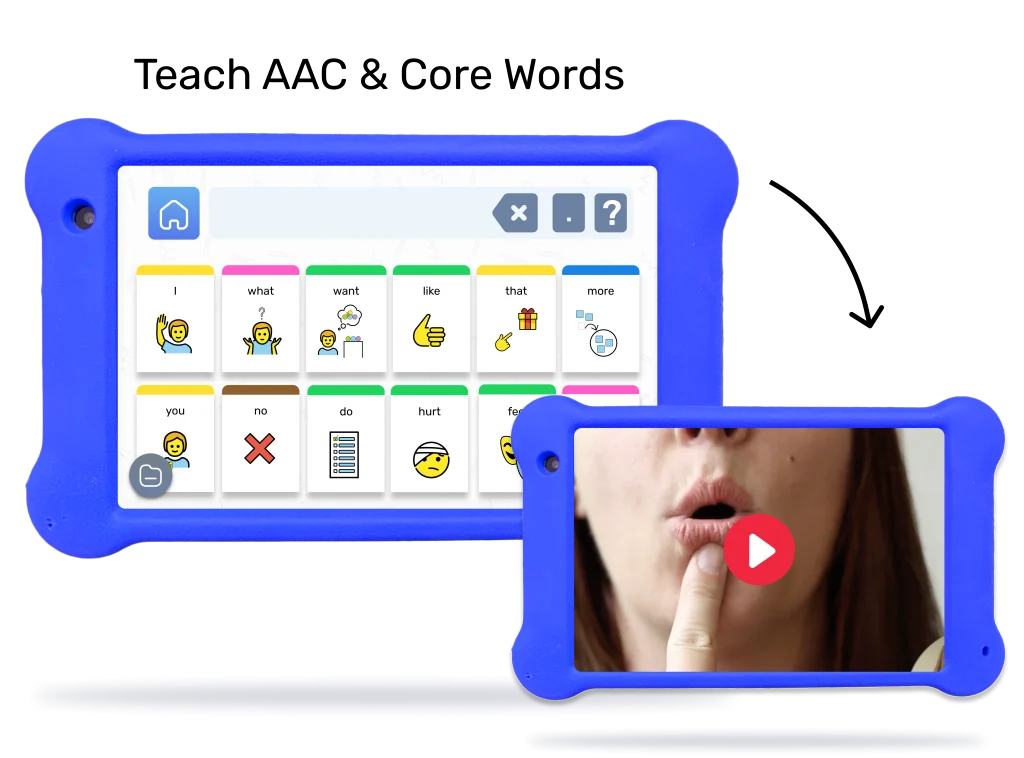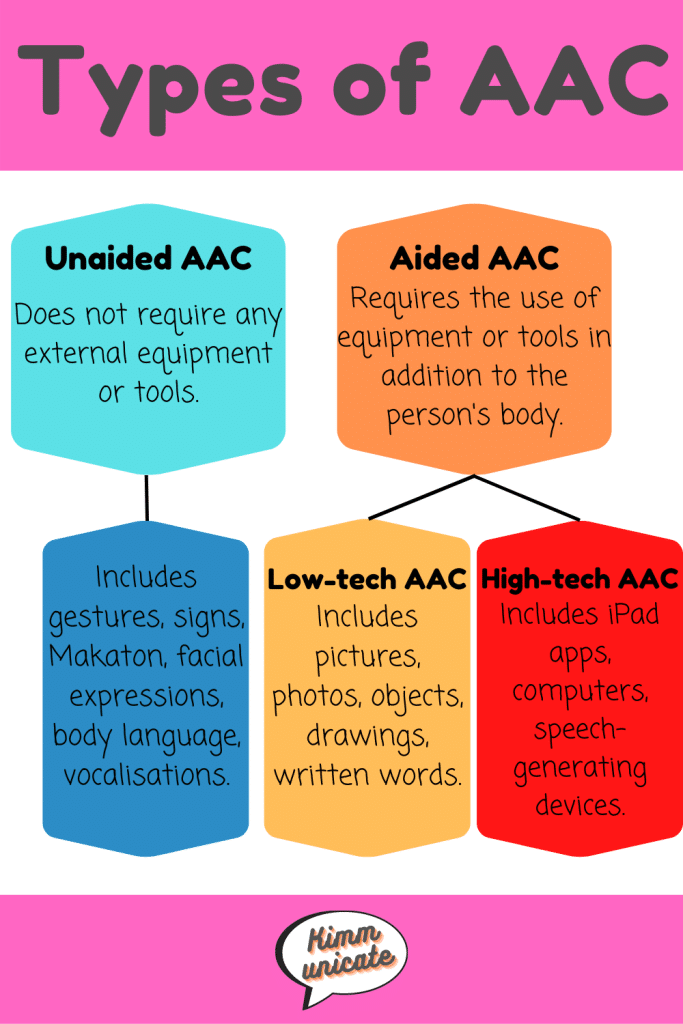Do you remember the last time you had to learn something new? What helped you learn the most, and what didn’t? Were there role models or teachers to support you along the way? Learning new things takes time, practice, and support. Learning how to use an AAC device to communicate is no exception. As you adjust to using technology with your child to help them express their ideas, focus on teaching and less on technology to increase success and reduce overwhelm. Teaching your child to use an AAC device, or “talker”, requires patience and commitment. Consider the following steps to guide your learning and teaching.
Table of Contents
Get Familiar with the Talker
Augmentative and alternative communication (AAC) comes in many forms and goes by many names. Regardless of how it looks or what you call it, your child’s AAC device is a tool that offers access to language-but not without your support. As the person who spends the most time with your child, you are an essential teacher in your child’s AAC learning process. To teach your child how to use their AAC talker to communicate ideas, you must know what words are there, and how to find them. You don’t need to become a tech master overnight! Simply begin learning how to communicate with your child’s Talker so you can be a role model. To start the process of getting familiar with your child’s AAC device, consider these tips:
- Start on the first page – Going from page to page in a complex AAC device may be too much as you’re first learning. To keep things simple, start trying to model words on the first page of the Talker when practicing with a partner, and when interacting with your child. It’s a great starting point for learning because these words are easy to locate and kids use them frequently. As you gain confidence, challenge yourself to go into different folders and pages in the AAC device to find words and phrases that support your child’s interests.
- Practice with and without your child – Modeling words on your child’s AAC device as you speak is the best way to show your child learn to use their Talker. You may feel a bit lost early on, so trying to model only when your child is present might feel overwhelming. Set aside time to practice using the AAC device with your spouse, a friend, or a family member when your child isn’t present. Think of these practice sessions as being similar to learning a foreign language. Try picking a topic and use the AAC device to talk about it with your practice partner. You don’t need to press a button for every word, just the key ones. Over time, you’ll learn where words are on the Talker, and be able to talk about more topics using longer sentences. Can you see a weekly AAC Date Night in your future?
Notice What Your Child is Saying
As you get familiar with words on your child’s AAC device, you’ll likely feel motivated to model more words for your child. One of the best ways to choose what and when to model is by observing the ways in which your child already communicates during a familiar routine or activity. When you model words on the AAC device that align with what your child is communicating using other methods (e.g., gestures, facial expressions, behavior), your child will be more engaged with what you’re saying and showing on the AAC device.
Think about a few activities or routines where your child is motivated and communicating. This might be activities like swinging, or games like hide and seek and chase. As you play or complete tasks together, watch and listen to how your child engages with these activities. What do they say or do to show their preferences? Children communicate in many ways, including through:
- Gestures like reaching, pointing, or shaking their head
- Sounds that are not speech, such as changing their voice to indicate they like something, or don’t like something
- Movements, such as pacing in the kitchen when they are hungry
- Behaviors like jumping excitedly to show pleasure
Take note of how your child communicates during engaging routines and make a list of words or phrases that you could model to match the intent of your child’s communication. These words and phrases can be a great starting point for modeling when teaching your child to use an AAC talker.

Read more: How to Choose an AAC Speech Device for Your Child
Show & Say Words to Match Your Child’s Ideas
Now that you’re getting the hang of finding words and noticing the ways your child expresses their ideas, you can start matching those ideas to words on the AAC device. The act of “modeling AAC” means that you’re speaking with AAC to show your child how they can speak with AAC. Do this by pressing one or more words on the AAC device as you speak naturally to your child. If your child is learning their first spoken words, or you’re still new in your AAC learning journey, you may just model one word as you say a full sentence. As you get comfortable with the modeling process and your child progresses, you’ll start to model word combinations and eventually, full sentences on the Talker. To get the hang of modeling with AAC, consider these tips:
- Wear the AAC device with a shoulder strap to make access for modeling easier as you move through your day
- Model a word on the first page to make your modeling quicker, which will maximize your child’s attention during the early AAC learning stage
- When you model words on other pages, make sure you start from the first page so your child can see how you got to the target word
- Model words that not only request items and actions but also share opinions and ask questions
Read More: What Are the Types of AAC?
Your focus is to make a connection between your child’s familiar way of communicating ideas, and the new way of using a word on the AAC device. When you notice your child communicating in a familiar way (see Step 2), model the word that matches their message by pressing it on the AAC device as you speak. You don’t need to require your child to press the word with you-just keep the fun interaction going and model wherever you can. Do this more often over time, modeling more words during favorite activities, and modeling during more activities and routines throughout your child’s day.

Read more: Will My Autistic Child Ever Talk?
How Do I Teach My Child To Use an AAC Talker? Talk About Things with AAC
Another strategy to teach your kid how to use an AAC talker is to use your child’s device to talk about things that happen during the day. This is helpful when your child is engaged in an activity with you but isn’t communicating at the moment. By speaking to your child about your thoughts and ideas using their AAC device, you increase the opportunities your child has to see AAC in action. You’ll also expand the topics and words your child can learn. Consider these ideas for talking your way through the day using your child’s AAC device:
- Model keywords on your child’s AAC as you give instructions
- Model words on your child’s device as you ask questions
- Model your opinions or comment on your own experiences during an activity
- Use AAC to talk about what to expect next in your daily schedule, or about special events coming up in the day
- Talk about experiences after they happen to model story-telling
Modeling is most powerful when it occurs frequently. Take advantage of the teaching moments that arise from your child’s initiation, and from your desire to share thoughts through spoken and pictured language. The more you model, the more you’ll entice your child to learn the meaning of new words and new ways to use words. Modeling on AAC as you speak helps your child understand your language and improves their ability to answer your questions and follow your directions.

Read more: Child Not Talking at 3 | Should You Be Concerned?
Offer Opportunities for Supported Practice
When you are teaching your child to use an AAC talker, focus most of your teaching efforts on modeling. Set goals for yourself to increase modeling gradually over time. You’ll likely get restless with “only modeling” and feel compelled to prompt your child to use the words that you’re modeling. For example, withholding items or actions until your child presses or says a word. These types of teaching strategies don’t lead to faster gains or better long-term outcomes for children communicating with AAC. Instead of placing high demands on your child to use the Talker, consider how you might be able to offer opportunities that inspire your child to use the new words they’re learning. Some powerful strategies to inspire practice without requiring it, include:
- Making sure the AAC tool is available at all times so your child can count on AAC when they need it
- Waiting longer (maybe a count of 5) before responding to your child’s current way of communicating, to encourage them to add to their message with AAC
- Saying part of a sentence and leaving a blank for your child to fill in with AAC (e.g., “Ready, set,…….”)
- Integrating AAC into fun, low-pressure games and routines where there aren’t any “wrong answers” (e.g., as your child presses words on their AAC device, you act them out)

Goally | Apps that Teach Kids AAC & Core Words
Is your child facing challenges in expressing themselves or communicating effectively? Goally has one of the best language language learning apps for kids to support their journey in building essential communication skills!

The Word Lab and AAC Talker apps provide a simple, engaging platform for your child to learn core words and become a functional communicator right from the start. Customize the experience with a voice that suits them, and watch as their confidence grows in expressing their thoughts and needs!
Keep in mind that language learning requires that the learner be immersed in the language for a substantial amount of time before they are proficient. It isn’t possible to predict how long your child will take to learn how to communicate with AAC, but experience and research tell us that the more exposure your child has to you and others speaking with AAC, the more learning opportunities they have. Keep your teaching efforts focused on fun and function. With time, you and your child will feel more competent and confident using AAC.
FAQs About Teaching a Child To Use an AAC Talker
What is an AAC Talker? An AAC Talker, also known as an Augmentative and Alternative Communication device, is a tool used to supplement or replace speech for individuals with communication impairments.
How can I introduce my child to an AAC Talker? Begin by explaining what the AAC Talker is and how it can help them communicate. Then, demonstrate its use and encourage them to explore the device.
Can any child use an AAC Talker? Yes, AAC Talkers can be used by children with a variety of communication impairments, such as those caused by autism, cerebral palsy, or other developmental disorders.
How effective is an AAC Talker in improving communication skills? AAC Talkers can significantly enhance communication by providing a voice to children who have difficulties with speech, thereby fostering independence and social interaction.
What strategies can I use to teach my child to use an AAC Talker? You can model the use of the AAC Talker in daily conversations, involve it in play-based activities, and provide plenty of positive reinforcement as your child learns to use it.
This post was originally published on 12/2/2022. It was updated on 04/17/2024.








